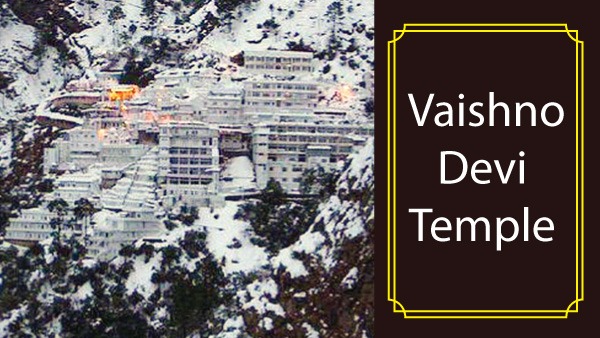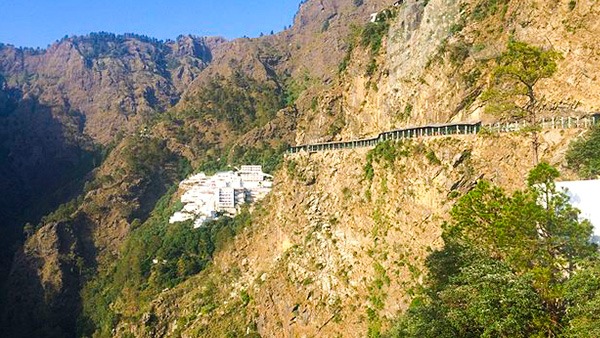Just In
- 30 min ago

- 44 min ago

- 4 hrs ago

- 10 hrs ago

Don't Miss
- Movies
 Chief Detective 1958 Episode 2 OTT Release Date, Time, Platform: When & Where To Watch? What To Expect? DEETS
Chief Detective 1958 Episode 2 OTT Release Date, Time, Platform: When & Where To Watch? What To Expect? DEETS - Sports
 IPL 2024: LSG vs CSK Award Winners, Man of The Match, Post-Match Presentation, Scorecard & Records
IPL 2024: LSG vs CSK Award Winners, Man of The Match, Post-Match Presentation, Scorecard & Records - News
 Chinese President Xi Jinping Orders Biggest Military Reorganisation Since 2015
Chinese President Xi Jinping Orders Biggest Military Reorganisation Since 2015 - Education
 Exam Pressure Does Not Exist; Studying Punctually is Crucial; Says Aditi, the PSEB 2024 Topper
Exam Pressure Does Not Exist; Studying Punctually is Crucial; Says Aditi, the PSEB 2024 Topper - Finance
 Reliance, ONGC, Tata, Adanis: Energy Stocks Didn't Get The Memo Of Bears, Up 12% In 30-Days; 10 Stocks To BUY
Reliance, ONGC, Tata, Adanis: Energy Stocks Didn't Get The Memo Of Bears, Up 12% In 30-Days; 10 Stocks To BUY - Automobiles
 Suzuki Swift Hatchback Scores 4 Star Safety Rating At JNCAP – ADAS, New Engine & More
Suzuki Swift Hatchback Scores 4 Star Safety Rating At JNCAP – ADAS, New Engine & More - Technology
 Dell Introduces AI-Powered Laptops and Mobile Workstations for Enterprises in India
Dell Introduces AI-Powered Laptops and Mobile Workstations for Enterprises in India - Travel
 Journey From Delhi To Ooty: Top Transport Options And Attractions
Journey From Delhi To Ooty: Top Transport Options And Attractions
Goddess Vaishno Devi: Some Unknown Facts About This Popular Pilgrimage Place
Vaishno Devi temple at Trikuta Hills, at Jammu is a perfect picture of calm and peace that caters to devotees of all mindsets and all levels of spiritual evolution. The mandir is located in Katra, a small district in Jammu and Kashmir. It is located at Trikuta mountain i.e., three-peaked mountains in Jammu and Kashmir that stand as tall as 5200 ft.

Revered as the most important pilgrimage shrine in India, Goddess Vaishno Devi is a manifested form of Goddess Parvati. It allows pilgrimage at all seasons, with more than 10000 million pilgrims visiting there every year. The devotees have their own ways and means to show their devotion to the Goddess; some of them crawl all the way up whereas some walk barefoot to seek the fulfilment of wishes.
Vaishno Devi is believed to strengthen the weak and bestow affluence to the poor, and progeny to the childless. Although the location is an unapproachable location and the commute is very difficult, the devotees are not deterred from visiting her shrine every year. Go through the below list of interesting facts about Goddess Vaishno Devi that inspires you to visit it at the earliest.

- It is believed that Mata Vaishno Devi, or Goddess Trikuta, wishing for Lord Rama's success against Ravana, faithfully observed the 'Navratri.', Lord Rama blessed her that she would attain world renown as Mata Vaishno Devi and also acquire immortality. Now her shrine attracts scores of pilgrims every year.
- Gorakh Nath, a Mahayogi had a vision in which he saw Lord Rama and Vaishno Devi conversing with each other. Naturally intrigued by this development and eager to know more about Vaishno Devi, Gorakh Nath sent his disciple Bhairavnath, who chased Mata Vaishno Devi, pestering her to marry him. His intention was to collect as much information as possible about her.
- Goddess Vaishno Devi resided at an Ashram on the foothills of Trikuta Parvata. Lord Rama instructed Vaishno Devi to build the Ashram in a specific way so that they could spend their time together as a couple during the Kaliyuga after their marriage. Goddess forgave Bhairavnath's irritating interference and blessed him with moksha after which she shed her human form and turned into a rock, in order to carry out her meditation in an uninterrupted manner.
- Hence, Goddess Vaishno Devi allows her darshan to devotees in her five and a half feet tall rock form with three heads on the top. The cave wherein she underwent this transformation is the actual shrine where she is worshipped today and the pindis from the sanctum sanctorum.
- There is a local legend that is most popularly heard amongst her devotees. Pandit Sridhar was a poor sage who in his dreams had Goddess Vaishno Devi leading him the way towards her temple. When Pandit followed the same track in real life, he was able to reach her cave with due occasional instructions from her whenever he lost his way.
- Geologically, speaking, the caves are a million years old. Trikuta was a mountain deity that has been mentioned in the Rigvedas. The shakti worship probably started during the era of Puranas.
- As per Mahabharata, Vaishno Devi was invoked by Arjuna while he was in a meditative state seeking her blessings, in order to win the war of Mahabharata. Arjuna is supposed to have described the Goddess Vaishno Devi as "Jambookatak Chityaishu Nityam Sannihilaye", which means "the one who permanently resides in the temple on the slope of the mountain in Jamboo".
- Jambu refers to as Jammu in this context. Therefore, Navaratri is the most auspicious time to visit the caves of Goddess Vaishno Devi.
- Visiting Vaishno Devi during the Navaratras is believed as being one step closer to attaining heaven. It is believed that the late Sikh Guru, Guru Gobind Singh himself visited Vaishno Devi in his lifetime.
- Although there are three main caves in this area, the main cave is closed for the major part of the year. Actually, as visiting three caves seems too long a time to spend on a travel holiday, only two of the caves are open for the pleasure of darshan for devotees.

- The route that is taken to reach the cave temple is not the original route. The original route is too narrow for the swarming masses to pass through it, at a time. The mountain was razed down at certain places to make a new path at Ardh Kuwari (the halfway point).
- Alhtough the main cave of the temple is open, only sometimes, to allow a complete darshan of the Goddess inside, darshan is possible, only when there are less than ten thousand pilgrims for the darshan at a time, and during this occasion, the doors to the main cave are opened. Mostly, during the Vaishno Devi yatra in the winter, this door opens in the months of December and January.
- The ancient cave is where Goddess Vaishno Devi is enshrined. The preserved mortal remains of Bhairavnath whom the goddess killed in this cave can be seen in this temple. As per the legend, when Goddess Vaishno Devi severed Bhairavnath'ss head. It flew to the Bhairav valley while the body remained lifeless in the cave..
- As per a local legend, a Ganges stream, which the devotees use to wash their hands and feet with before entering the temple, flows through the cave.
- At Ardhkuwari, there lies a separate cave, which again has a legend attached to it. This is where Goddess Vaishno Devi kept herself away from Bhairavnath's view for nine months, in the position of a foetus inside the mother's womb. This cave known as Garbhjun confers freedom from human conception in the womb or resolves all labour-related problems for those devotees who enter this cave.
- It was the visit of Guru Gobind Singh himself several years ago that popularised the shrine amongst the masses.
- Banganga River (Footprints of Vaishno Mata)- Banganga river is miraculous and spiritually a very significant place. Literally, it means Ban + Ganga i.e., arrow and Ganga. Once when Vaishno Devi felt thirsty, she shot an arrow into the earth, and a river originated as a result that is powerful enough to wipe away our past and present sins. At a short distance from Banganga, one can spot a place called Charan Paduka, the 'Feet Impression ' of mata, which attracts a lot of devotees.
Disclaimer:
The
information
is
based
on
assumptions
and
information
available
on
the
internet
and
the
accuracy
or
reliability
is
not
guaranteed.
Boldsky
does
not
confirm
any
inputs
or
information
related
to
the
article
and
our
only
purpose
is
to
deliver
information.
Boldsky
does
not
believe
in
or
endorse
any
superstitions.
Image
sources:
Wikimedia
Commons
-
 faith mysticismImported Flowers Adorn Vaishno Devi Temple
faith mysticismImported Flowers Adorn Vaishno Devi Temple -
 yoga spiritualityPM Narendra Modi Visitis BAPS Hindu Mandir Abu Dhabi: What's Unique, Costs, Visit Timings, And Other Details
yoga spiritualityPM Narendra Modi Visitis BAPS Hindu Mandir Abu Dhabi: What's Unique, Costs, Visit Timings, And Other Details -
 yoga spiritualityAyodhya Ram Mandir: PM Modi Kicks Off ‘Pran Pratishtha’ Rituals, His Itinerary For 22 January, Photo Inside!
yoga spiritualityAyodhya Ram Mandir: PM Modi Kicks Off ‘Pran Pratishtha’ Rituals, His Itinerary For 22 January, Photo Inside! -
 yoga spiritualityAyodhya Ram Mandir: Shankar Mahadevan Sings 'Ram Stuti' As PM Modi Reaches Temple, Know The Lyrics
yoga spiritualityAyodhya Ram Mandir: Shankar Mahadevan Sings 'Ram Stuti' As PM Modi Reaches Temple, Know The Lyrics -
 yoga spiritualityAyodhya Ram mandir Pran Pratishtha: How To Do Shri Ram Puja At Home On 22 January 2024
yoga spiritualityAyodhya Ram mandir Pran Pratishtha: How To Do Shri Ram Puja At Home On 22 January 2024 -
 insyncAyodhya Ram Mandir Live Telecast Link: Date, Time, Where, And How To Watch Pran Pratishtha Programme Online
insyncAyodhya Ram Mandir Live Telecast Link: Date, Time, Where, And How To Watch Pran Pratishtha Programme Online -
 yoga spiritualityAyodhya Ram Mandir Inauguration: Pran Pratishtha Wishes, Messages, Greetings, Images, WhatsApp And FB Messages
yoga spiritualityAyodhya Ram Mandir Inauguration: Pran Pratishtha Wishes, Messages, Greetings, Images, WhatsApp And FB Messages -
 yoga spiritualityAyodhya Ram Mandir Inauguration: See First Clear Pictures Of Ram Lala Here!
yoga spiritualityAyodhya Ram Mandir Inauguration: See First Clear Pictures Of Ram Lala Here! -
 astrologyAyodhya Ram Mandir: How The Consecration Day Of Ram Lalla On 22 January Will Affect Your Zodiac Signs
astrologyAyodhya Ram Mandir: How The Consecration Day Of Ram Lalla On 22 January Will Affect Your Zodiac Signs -
 insyncAyodhya Ram Mandir: More Than 150 Tesla Cars In Maryland, US Line Up To Form Word 'Ram'
insyncAyodhya Ram Mandir: More Than 150 Tesla Cars In Maryland, US Line Up To Form Word 'Ram' -
 insyncAyodhya Ram Mandir Inauguration: These 5 States Have Declared Holiday On 22 January
insyncAyodhya Ram Mandir Inauguration: These 5 States Have Declared Holiday On 22 January -
 yoga spiritualityAyodhya Ram Mandir: Recite Shri Ram Raksha Stotra Lyrics For The Blessings Of Lord Rama
yoga spiritualityAyodhya Ram Mandir: Recite Shri Ram Raksha Stotra Lyrics For The Blessings Of Lord Rama


 Click it and Unblock the Notifications
Click it and Unblock the Notifications



